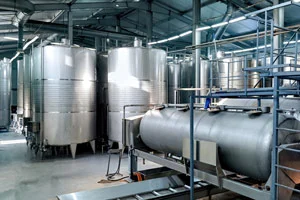In winemaking, it is important to have information on the parameters of both the must and the wine to evaluate their quality. This must be done throughout the production process to correct any deviation that may arise, and one of these essential parameters is the wine’s redox potential.
Why is it important to measure redox potential in wine?
The redox potential or electrochemical potential provides data on the oxide-reduction process, indicating if the species are in an oxidized or reduced state, depending on the E° of each species (Normal reduction potential). The electrochemical potential will evolve throughout the entire production process. Knowing these levels will provide information about the related phenomena (risks of oxidation or reduction) and let us exert actions to help us guide the process.
The wine is changing, and to control it, we must use equipment that measures these values during conservation, either in tanks or in barrels. The redox potential is measured in mV, indicating the state of the liquid in terms of oxidation and reduction.
In the case of:
- Musts: To be measured during the maximum oscillating period, with values between 200mV – 300mV. Because we found O₂ dissolved in high proportions, the risk of oxidation is greater. Taking all this into account, we need to add antioxidants, such as inactive dry yeasts with high reducing power.
- Alcoholic and malolactic fermentation: The microbiological activity produces a significant decrease in the electrochemical potential. We’ll find the minimum values during this period. The controlled addition of O₂ is necessary to avoid excessive reduction, as well as to ensure the viability of yeasts and therefore the course of fermentation, since values below -250 mV can influence the survival of fermentative yeasts.
- For the proper conservation of the wine, the values must remain between 0 – 150mV, with the danger of oxidation starting at 250mV (E > 250mV).
How to predict the oxidative evolution of wines with by measuring the redox potential
By means of the potentiometric titration, we can measure the wine’s set of redox pairs. This allows us to monitor its evolution over time in terms of its oxidative activity, letting us control the process.
Oxidation causes changes in the color of the wine and affects the aromas, decreasing aromatic intensity, especially as it affects the notes of fruits. Although a certain contribution of O₂ will be beneficial, if we regularly check the evolution of the redox potential.
Dissolved oxygen does not affect all wines equally, but there are many parameters that influence the relationship, such as the wine’s metal content or antioxidant capacity. Therefore, monitoring the electrochemical potential is a necessary measure when subjected to an O₂ intake, so that we can adjust the doses.
The redox potential is affected in alcoholic fermentation due to the presence of microorganisms, yeasts, the contribution of O₂ and nutrition. At this stage, the multiplication of yeasts also influences the electrochemical potential, which means, again, the need to control the process to avoid the problems this can cause during wine production.
During conservation, we should pay attention to the possibility that the redox potential may be altered, especially if it rises, which would favour the development of aerobic microorganisms and oxidation reactions.
It is important to find the potential values that have been produced during production because the organoleptic properties of the wines will depend to a large extent on them.
Likewise, before bottling, it is important to know the wine’s redox potential and use this as a starting point for how the wine will result after bottling. This will ensure that we make the right decisions to favour the proper evolution of the liquid, such as the elimination of dissolved oxygen, dosing antioxidants or choosing the right corks.
ElectroWine, Agrovin’s solution for controlling oxidation-reduction processes in wine
As we have already mentioned, there are certain parameters that must be monitored for the wine to be suitable when it reaches the consumer. Agrovin provides a solution for controlling the wine oxidation-reduction processes: Its Electrowine equipment.
Electrowine allows the oxygen to be supplied in several ways, depending on the type of treatment:
- Micro-oxygenation
- Macro-oxygenation
- Variable
With this, we can monitor the redox potential and add the O₂ according to the most appropriate values at each stage of the procedure.
The Electrowine system has a touch screen where different variables can be viewed and modified, showing different graphs and letting us transfer the data to a computer to manage the next steps. There are different models for working with electrochemical potential probes and other outlets to provide accurate oxygen dosing.
With Electrowine, you can check the state of oxidation-reduction of the wine, but the Electrowine DosiOx model can add the oxygen itself during the various stages of production in a controlled manner.
Agrovin has managed to provide a solution that is effective in order to properly control the oxidation process, seeking, as always, the standards of quality for which we are known.


